Sorting, drying, and packaging – completely without the use of forklifts
From the log infeed upstream of the sawmill to the finished board made of cross-laminated timber (CLT), the entire material flow at the new facility of best wood SCHNEIDER® GmbH in Messkirch, Germany, takes place with minimal manual interaction. Kallfass supplied all the sorting and automation solutions, starting from the point where the saw takes over until the link to the future CLT plant.
“We were seeking partners who would join us in planning an unusual sawmill with us. In Kallfass we found that partner, who also has the necessary open mind to think about matters in a new and alternative way. In addition, we already knew Kallfass who had successfully completed projects in our main factory in Eberhardzell, Germany. So it was easy for us to decide to collaborate again on this major project”, says Andreas Schilling, site manager at best wood Schneider in Messkirch, Germany, describing the excellent cooperation with Kallfass.
The scope of delivery of the mechanical engineering firm from the Black Forest starts at the takeover of the timber directly downstream of the two sawing lines. Whilst using two log band saws and a chipper-canter line for all logs with a crown diameter of less than 30 cm, Schneider GmbH will be cutting approx. 350,000 solid m3/year once the production has reached its full expansion stage. “By combining band and circular saw technology, we are particularly flexibly positioned and can act as a full buyer for the forestry sector. In times when procurement situations become increasingly problematic, this is particularly important”, reports Schilling.
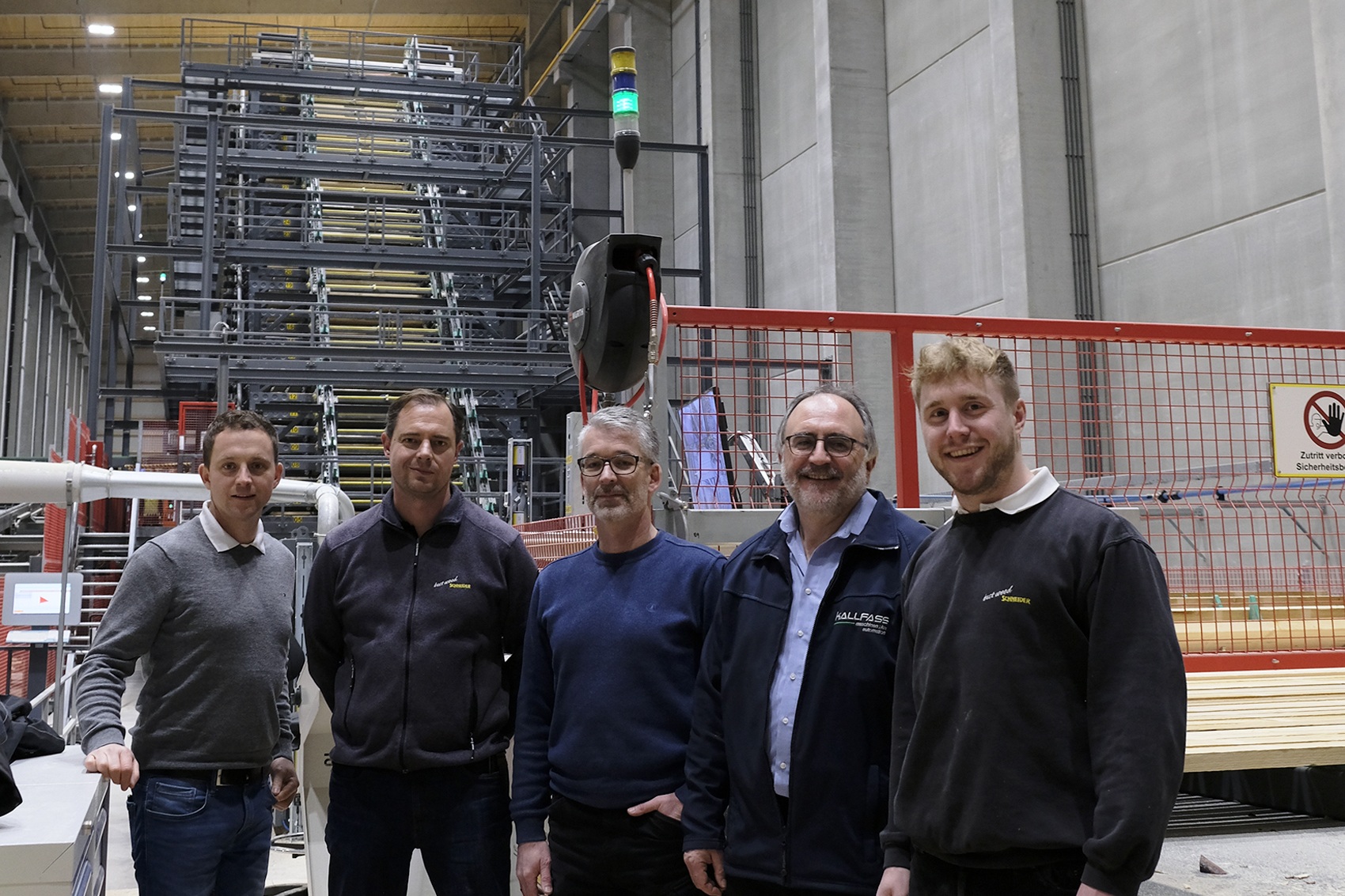
A successful project for customer and supplier alike: Marvin Faust, Head of Wood Purchasing Messkirch, Site Manager Andreas Schilling, Kallfass Project Manager Stefan Günther, Kallfass Managing Director Hans Haist, and Max Schneider, Junior Managing Director at best wood Schneider GmbH (from left), in front of the sorting line.
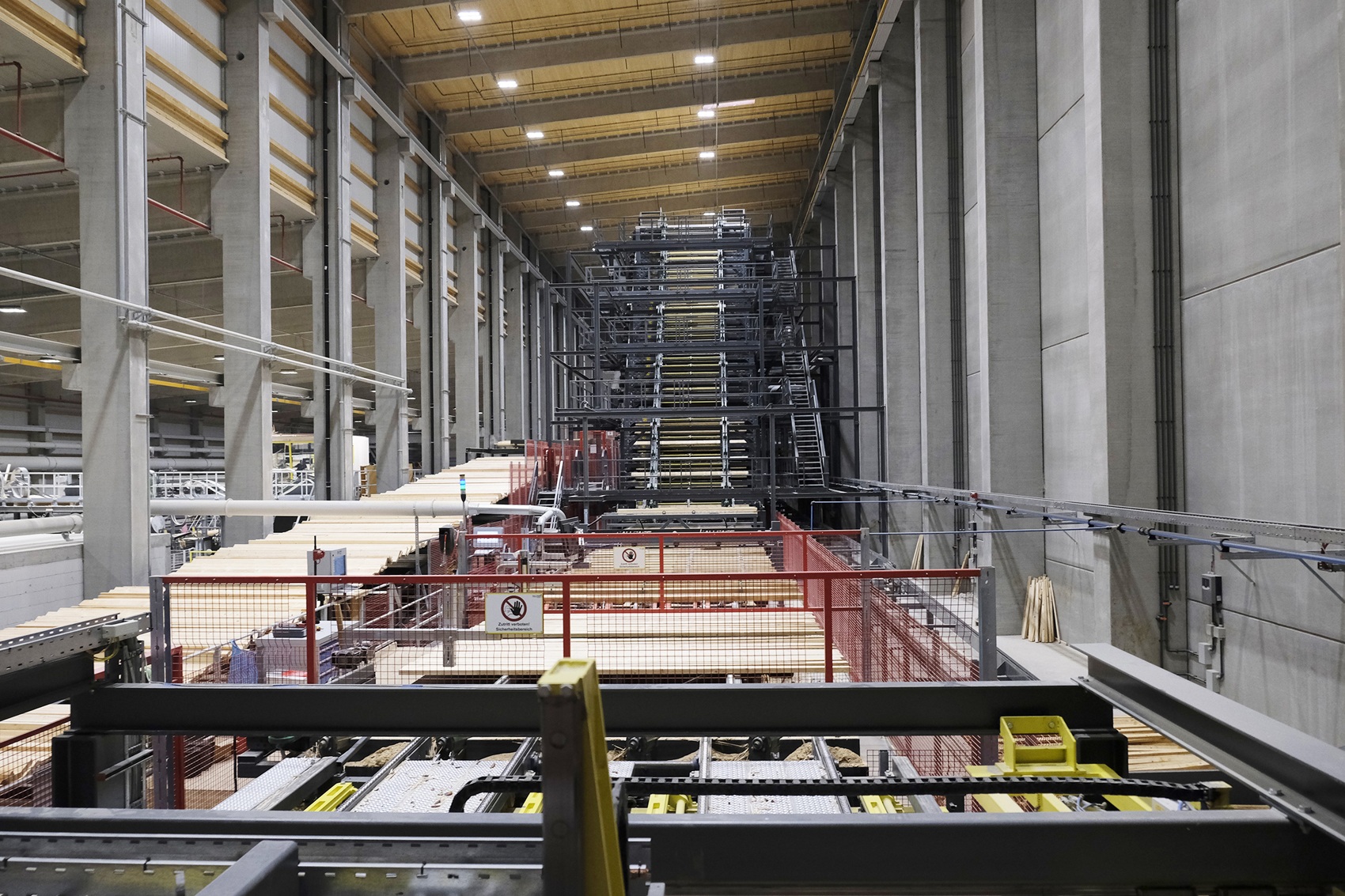
The fully automated dry (right) and wet (left) sorting lines were also a very special order for Kallfass.
Flexible sorting
Four buffer levels, one level directly above the other, take over the sawn timber. “Each level is designed for the exact filling quantity of the subsequent drying package. This enables us to time the wet sorting process selectively”, explains Managing Director Hans Haist of Kallfass. The entire sorting system can process boards measuring 3,600 to 4,300 mm long and 95 to 259 mm wide. Thicknesses from 36 to 53 mm can also be processed, ensuring the greatest possible flexibility for further processing in the company’s sorting area. In terms of efficiency, the system also meets all requirements. It operates at 80 cycles per minute in both wet and dry areas.
28 m³ of sawn timber per dry wood package
During the process, the individual levels are emptied one by one. Subsequently, the boards are separated before their thickness is measured, and the Kallfass’ multiple circular cross-cut saw trims the excess length of the lumber as required.
The wood packages are then automatically stacked for drying purposes. best wood Schneider GmbH works with mixed widths and thicknesses. “This makes little difference for the continuous kiln, and the Kallfass systems also cope very well with it”, Schilling informs us.
Many companies already rely on a drying chamber solution; therefore, mixed packages are nothing unusual in the timber world. When you walk through the factory, what immediately strikes you is the size of the individual packages of sawn timber. “The wood packages measure 2 m wide by 4 m long. The most impressive aspect, however, is the height of these packages, each one standing 6 m tall. That means, depending on the moisture content of the lumber, up to 30 tonnes are transported through the halls with each package. The demands on our automation systems were, therefore, exceptionally high”, explains Haist.
“The complete material flow is 100 % automated. This means zero forklift operations and zero manual transport whatsoever between the individual production phases.”
Andreas Schilling, Site Manager of best wood Schneider GmbH
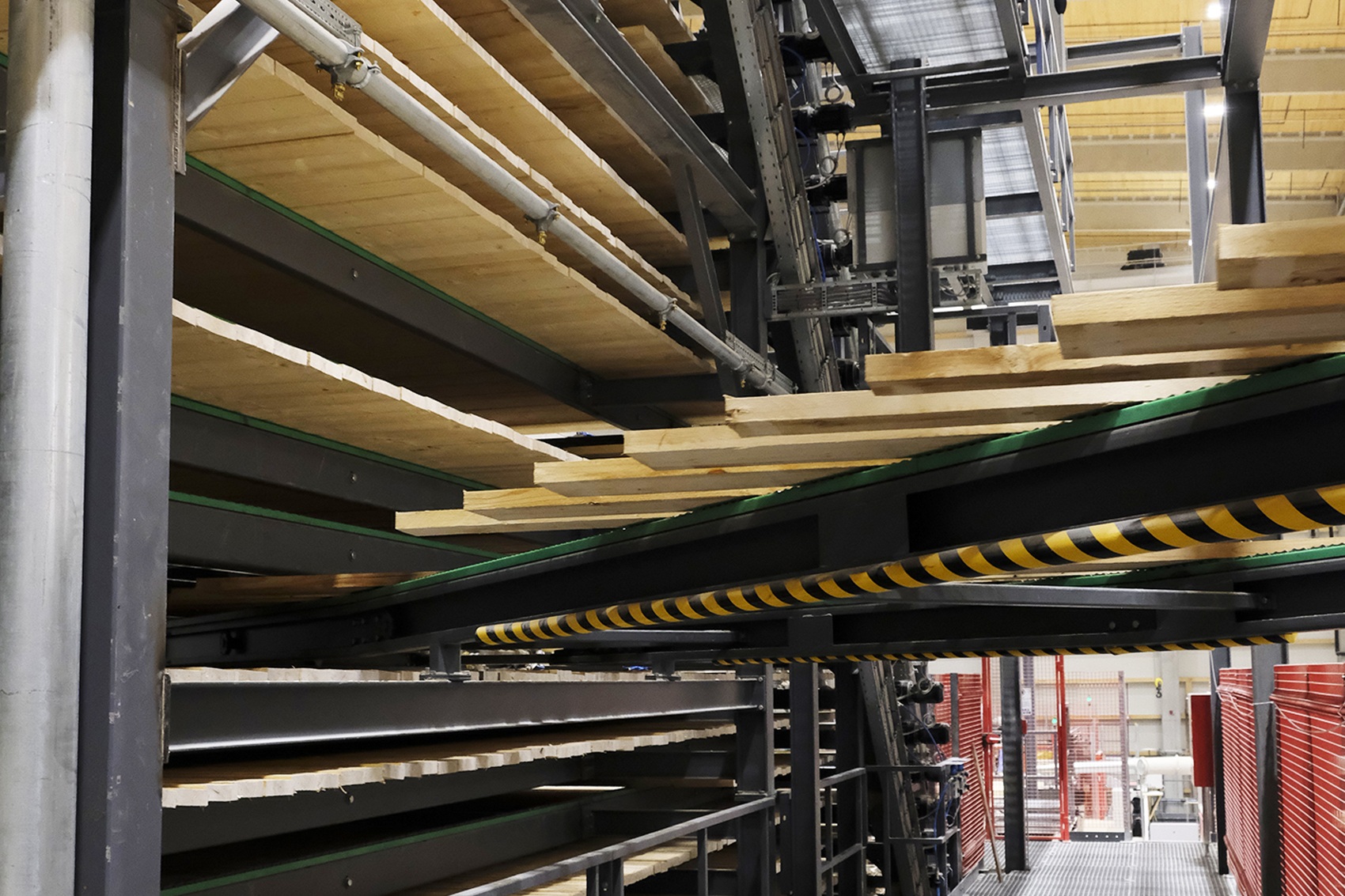
Bypass system: Slats containing too much moisture can simply be returned to the wet sorting process.
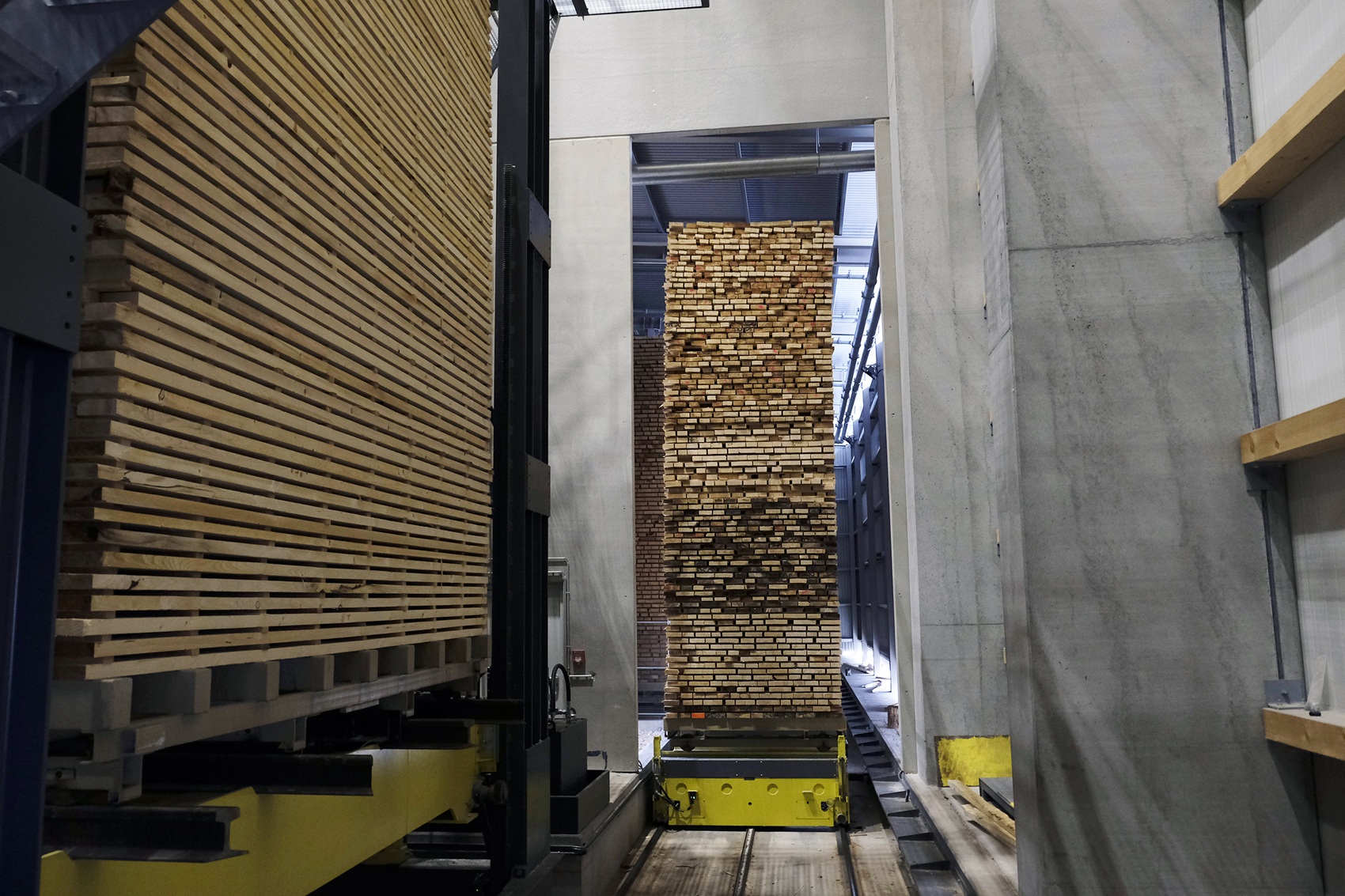
New dimensions: The sawn timber packages can weigh up to 30 tonnes and are transported through the plant fully automatically without the use of forklifts.
Fully automated transport
Subsequently, the finished stacked wood packages are hydraulically lowered and automatically taken over by the dryer infeed. “The complete material flow is 100 % automated. This means zero forklift operations and zero manual transport whatsoever between the individual production phases”, says Schilling enthusiastically about the concept and the mechanical implementation provided by Kallfass. A total of 150 transport trolleys are in circulation simultaneously, ensuring a constant flow of material throughout the entire production system. “The fully automatic charging of the continuous kiln on rails is something unique and certainly one of a kind, at least in Central Europe,” Haist comments on the operator-free material transport.
Sorting system with bypass
Once the wood packages are ready and dried, Kallfass takes over again and uses a vacuum lifter to destack the packages. Next, a brush automatically sweeps and tosses the stacking sticks onto a conveyor belt. The latter moves the stacking sticks along the dry sorting unit back to the wet sorting area. Here, before the sticks are used again, they are measured and checked for their ongoing suitability using a board shape scanner.
The dried slats are then separated again, and their dimensions are measured using a laser before the wood moisture content is measured without contact in a continuous process. The downstream multi-level sorting system extends over a length of 128 m, has 35 levels and—like the wet line—has a capacity of 80 cycles per minute. The uppermost level is about 20 m above the factory floor. “Our unsorted cutting method places increased demands on the sorting process, which Kallfass addressed and was also able to comply with”, explains Schilling.
An absolute Kallfass unique feature is the integrated bypass system, which connects the dry with the wet sorting line. If a slat does not pass the moisture test, it is immediately fed back to the wet sorting line and thus reintroduced into the process.
Connection to CLT plant
The Microtec Optiside cup scanner detects each dried and sorted slat leaving the sorting system. Subsequently, the Kallfass planing machine infeed is accelerated by the up to 250 m/min. Downstream of the pre-planing machine, a Microtec Goldeneye scanner optimises each slat for subsequent cross-cut processing. Finally, the slats are packaged again using a cross-stack method and transported directly to the future CLT plant, or strapped and temporarily stored using a hoisting unit to load the lorry.
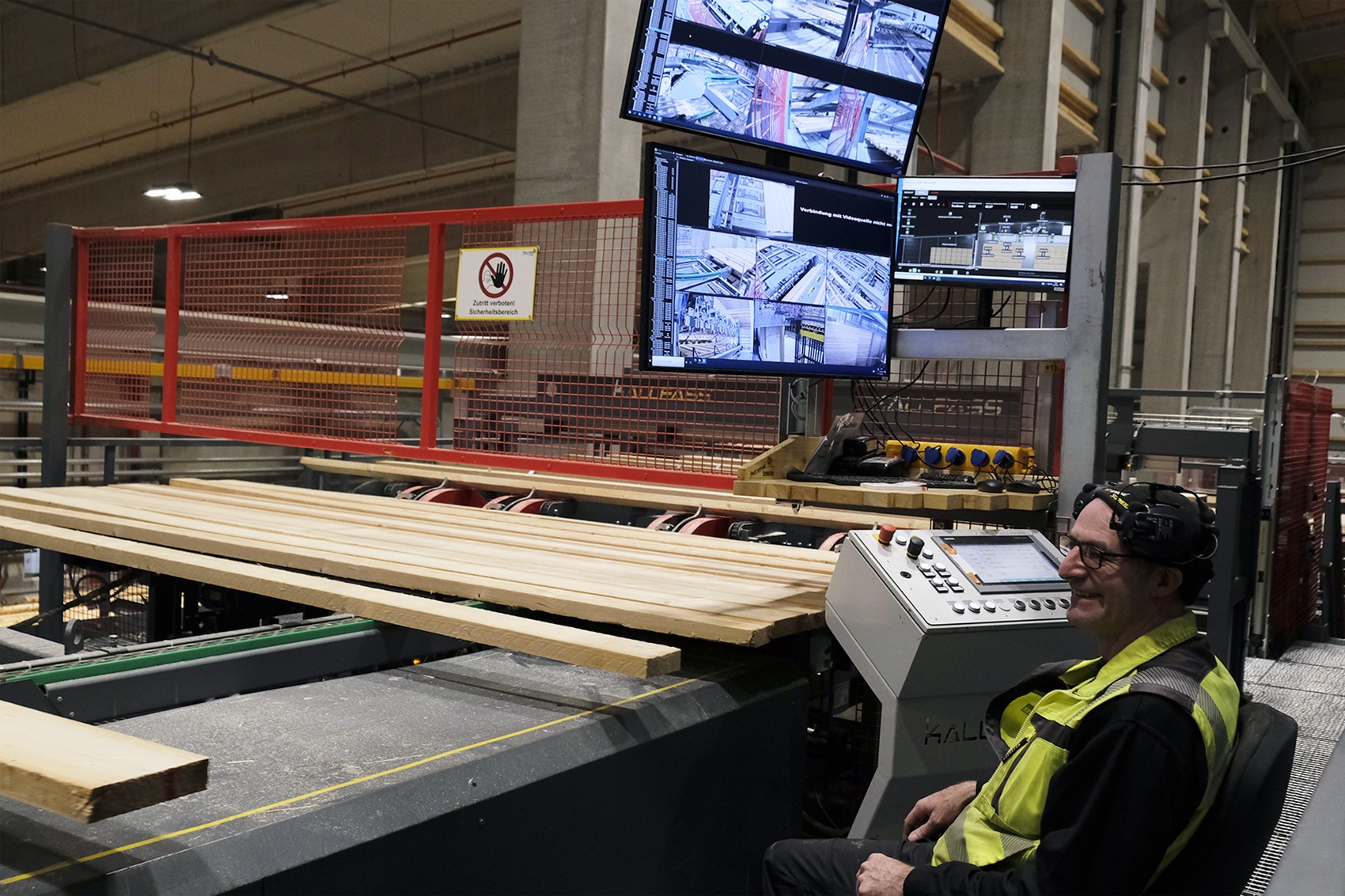
Relaxed at work: After separation on the wet sorting line, a visual inspection can still occur. Together with the cull lumber pieces, the damaged wood falls directly into the central scrap wood removal unit.
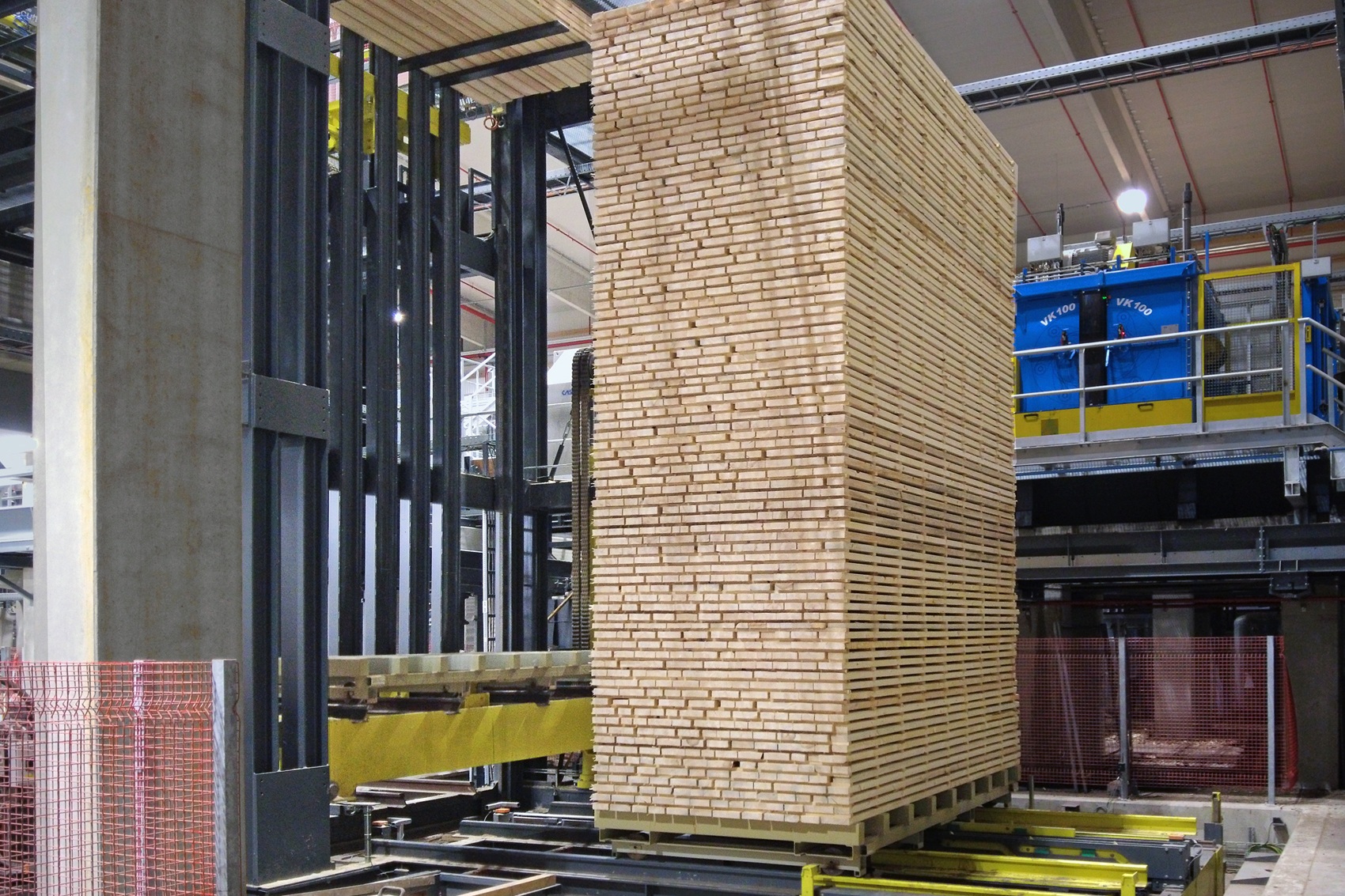
The perfect drying chamber solution for large packages: Mechanisation on rails in the circulation system.
